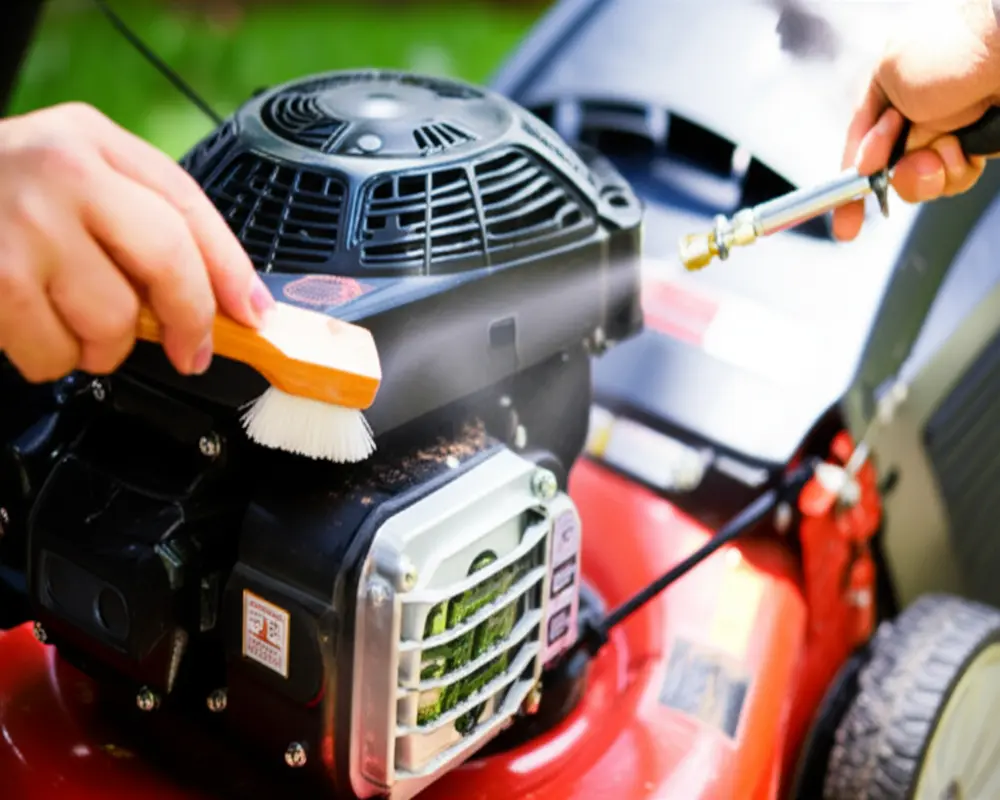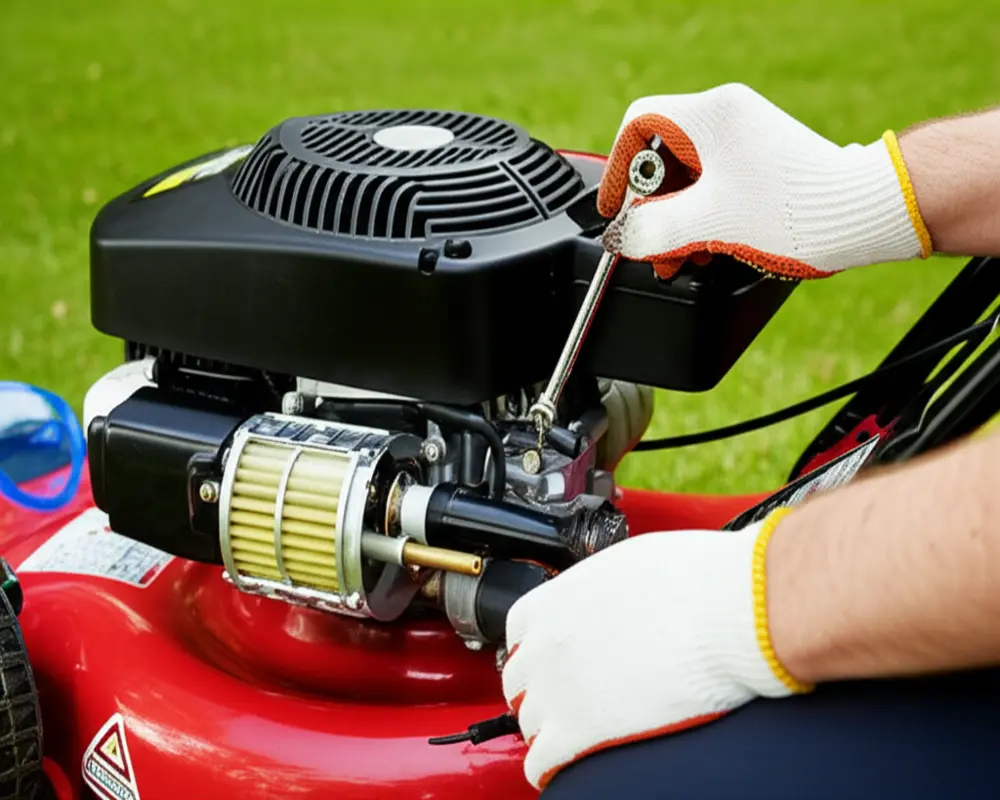Lawn Mower Engine Maintenance: Ultimate Guide for 2025
Proper lawn mower engine maintenance is essential for anyone who relies on this indispensable tool to keep their yard in excellent condition. Regular engine care not only extends the lifespan of your mower but also ensures optimal performance, reliability, and cost savings by preventing unexpected breakdowns and costly repairs. Unlike general mower upkeep that may focus on the exterior or blades, engine maintenance targets the heart of your machine: the engine, which powers every cut.
This comprehensive guide for 2025 covers everything from routine checks to seasonal tune-ups, safety precautions, troubleshooting common problems, and when to seek professional help. Whether you're a seasoned landscaper or a homeowner looking to maintain your mower, this article provides expert insights to keep your engine running smoothly year-round.
Essential Safety Precautions Before Maintenance
Before starting any maintenance work on your lawn mower engine, safety must be your top priority. Begin by disconnecting the spark plug wire to prevent accidental engine start, which can cause serious injury. Allow the engine to cool down completely, as hot components can lead to burns. Perform maintenance in a well-ventilated area to avoid inhaling fumes, and always wear personal protective equipment (PPE) such as gloves and safety goggles.
Stabilize the mower on a flat surface to prevent tipping, and consider draining fuel if the maintenance involves fuel system components. These precautions create a safer environment for effective maintenance and protect both you and your mower.
Understanding Your Lawn Mower Engine
Knowing your engine’s design and components helps you perform targeted maintenance. Most lawn mower engines are either 4-stroke or 2-stroke. A 4-stroke engine uses separate oil and fuel systems, providing lubrication through the oil sump, while a 2-stroke engine blends oil with fuel for lubrication.
Key engine components to be familiar with include:
- Spark plug: ignites the fuel-air mixture for combustion.
- Air filter: acts as the engine’s lungs, allowing clean airflow and preventing debris entry.
- Carburetor: mixes fuel and air in the correct ratio for efficient combustion.
- Fuel system: includes the tank, lines, and filters ensuring clean fuel delivery.
- Oil sump/crankcase: (for 4-stroke) provides lubrication to moving parts.
- Muffler/exhaust: channels exhaust gases safely away.
- Flywheel and ignition coil: control ignition timing and engine operation.
Tools & Supplies Needed
To perform effective engine maintenance, gather the right tools and supplies upfront. Basic hand tools like wrenches, screwdrivers, and pliers are essential. A spark plug wrench and gap tool help in spark plug servicing. Use a funnel and an oil drain pan for oil changes. An air compressor is optional but useful for cleaning debris. Stock up on shop rags, fresh engine oil suited to your mower’s specifications, and fuel stabilizer to maintain fuel quality.
Keep replacement parts handy, including spark plugs, air filters, fuel filters, and carburetor cleaner, so you can promptly address worn components.
Routine Engine Checks (Before Each Use)
Performing quick checks before each mowing session prevents minor issues from escalating. If you have a 4-stroke engine, check the oil level to ensure proper lubrication. Confirm there is enough fuel in the tank and inspect the air filter for dirt or damage. Clear any debris from cooling fins and the engine area to maintain airflow and prevent overheating. A visual inspection for fuel leaks, oil leaks, or loose parts will help you catch potential problems early.
Comprehensive Seasonal Maintenance (Spring Tune-Up/Annually)
At least once a year, or ideally every spring before the mowing season, conduct a thorough engine tune-up to maximize performance and longevity.
Engine Oil Change
Changing the engine oil is critical for 4-stroke engines. Over time, oil degrades and accumulates contaminants that impair lubrication and cause wear. Use the oil type and weight recommended by your mower’s manufacturer, typically SAE 30 or 10W-30. Warm the engine slightly to thin the oil, then drain it completely using a drain pan. Dispose of used oil responsibly at a recycling center. Refill with fresh oil through a funnel to avoid spills.

Spark Plug Maintenance
Inspect the spark plug for carbon deposits, corrosion, or wear. Clean carbon buildup gently with a wire brush and reset the electrode gap with a gap tool according to manufacturer specs (usually around 0.030 inches). Replace the spark plug if the electrode is damaged or the engine shows persistent ignition issues.

Air Filter Care
Clean foam air filters with warm soapy water and let them dry completely before reinstalling. Paper air filters should be replaced if dirty or clogged. Maintaining a clean air filter ensures proper airflow, fuel efficiency, and engine power.
Fuel Filter Replacement
Check the fuel filter for dirt or blockage, which can starve the engine of fuel. Replace annually or sooner if the mower runs roughly or stalls unexpectedly.
Carburetor Maintenance
Symptoms such as hard starting, rough idle, or engine stalling can indicate carburetor problems. Use a fuel stabilizer to prevent varnish buildup if the mower is stored for extended periods. Clean the exterior of the carburetor with carburetor cleaner, but internal cleaning or rebuilding is best left to professionals unless you have experience.
Engine Bay Cleaning
Remove grass clippings, dirt, and debris from the engine bay to maintain airflow and prevent overheating. Use a brush or compressed air, avoiding direct water spray to sensitive components.

Winterization and Off-Season Storage
Properly preparing your mower for winter storage prevents damage and simplifies startup in spring. Manage fuel by either draining the tank completely or adding a fuel stabilizer and running the engine dry to clear fuel lines. Change the engine oil to remove contaminants accumulated during use. Remove the spark plug and apply a couple of drops of oil into the cylinder to prevent rust, then reinstall the plug without connecting the wire.
Thoroughly clean and inspect the engine for any damage or wear. For electric start models, remove the battery and store it in a cool, dry place, periodically charging it to maintain capacity.
Common Engine Problems and Troubleshooting
If your lawn mower engine won’t start, first check the fuel quality and level, ensuring there is no stale fuel causing issues. Inspect the spark plug for fouling or damage, and verify the air filter is clean. Clogged fuel filters or carburetor problems can also prevent startup.
Rough running or stalling may result from dirty carburetors, fuel system blockages, or ignition faults. Loss of power can be due to worn spark plugs, dirty air filters, or engine compression issues.
Engine smoke color offers diagnostic clues: blue smoke indicates oil burning, black smoke suggests a rich fuel mixture, and white smoke can signal coolant or water contamination. Addressing these symptoms early prevents costly repairs.
Customizable Maintenance Schedule
| Maintenance Task | Frequency | Details |
|---|---|---|
| Check oil level | Before each use | Ensure proper level for lubrication (4-stroke engines) |
| Inspect air filter | Before each use | Clean or replace if dirty |
| Change engine oil | Every 25 hours or monthly | Use recommended oil type and dispose of used oil responsibly |
| Spark plug inspection and cleaning | Every 50 hours or seasonally | Check gap, clean carbon deposits, replace if necessary |
| Replace fuel filter | Every 50 hours or seasonally | Maintain fuel flow quality |
| Seasonal tune-up | Annually or pre-storage | Comprehensive check including carburetor and engine cleaning |
When to Consult a Professional
Not all issues can be resolved with routine maintenance. Complex carburetor problems, significant internal engine damage, or persistent issues despite troubleshooting require professional attention. If you detect unusual noises or safety concerns, err on the side of caution and seek expert help.
Conclusion: Benefits of Proactive Engine Care
Regular lawn mower engine maintenance pays dividends in ensuring your mower remains reliable, efficient, and long-lasting. By following a consistent maintenance schedule, addressing problems early, and prioritizing safety, you protect your investment and enjoy a smoothly running engine season after season.
For additional gardening equipment care tips, explore our guides on garden spade rust prevention and hand cultivator troubleshooting to complement your lawn care routine.
For authoritative resources on mower safety and maintenance, visit the U.S. Consumer Product Safety Commission and Bob Vila’s lawn mower maintenance tips. The Family Handyman’s small engine maintenance guide offers additional practical advice.
Frequently Asked Questions (FAQs)
Q: How often should I change my lawn mower’s engine oil?
A: For most 4-stroke engines, change the oil every 25 hours of use or at least once per mowing season. Always refer to your manufacturer’s guidelines for specific recommendations.
Q: Can I clean the air filter instead of replacing it?
A: Foam air filters can be cleaned with mild soap and water, dried, and re-oiled. Paper filters should be replaced when dirty, as cleaning can damage their filtration capacity.
Q: What signs indicate a spark plug needs replacement?
A: If the spark plug is corroded, has a worn electrode, or the engine experiences hard starts and misfires despite cleaning, replacement is necessary.
Q: Why does my engine produce black smoke?
A: Black smoke usually means the engine is running too rich, with too much fuel in the combustion mix. This can be caused by carburetor issues or a dirty air filter.
Q: Is it necessary to winterize my mower engine?
A: Yes, winterizing prevents fuel degradation, corrosion, and mechanical damage during storage. Proper winterization ensures easier startup and longer engine life.

